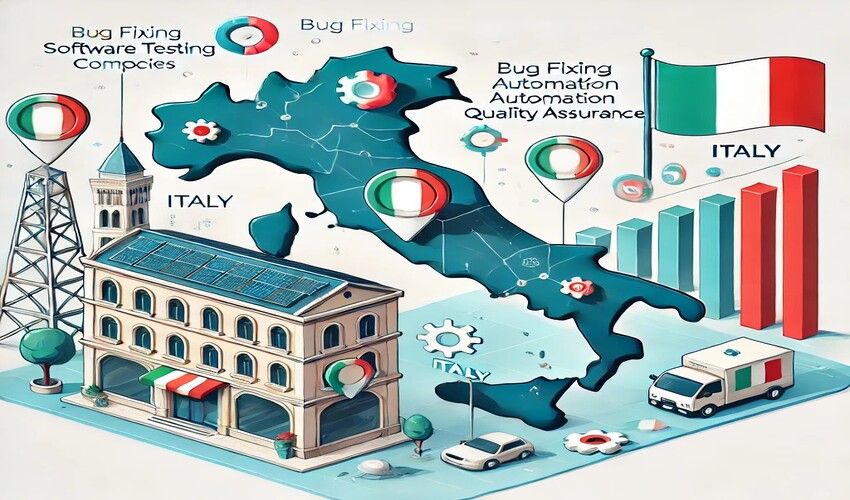Imagine the home screen of your phone; it is populated with apps.
Now take away the icons from these applications and see what’s left, just their names. The home screen looks like a word vomit.
You’ll have to read several names before you find the right app, the search process only gets easier once you rehearse the position of each application.
Logos are necessary; due to the continued tradition of associating a logo with a brand, people search for these symbols each time they discover a new service.
With visual memory being much stronger than auditory memory, seeing a logo is easier to remember than hearing its name.
Our brains hold onto logos like pictures in a photo album, making them easy to recall.
Therefore, having a logo is an unavoidable task. Most brands tend to hire an external service to put together this symbol.
Every logo design agency in USA tends to follow a standard design procedure, here are some of the steps they take:
- Understanding Brands Background
The employees of any company are well-versed in its services and history, unlike an outsider.
Each time designers take up a new logo design project, they must overgo the details of the company hiring them.
Having adequate information allows the design agency to analyze if the company follows a consistent theme in other projects or if there is a particular idea that each campaign emphasizes.
At the same time, the agency should simultaneously conduct research on the brand they were appointed to; this includes understanding the service, any main objective of the brand, or specific features that can encompass all products within one sign.
Research forms the ideation part of logo design; it is fundamental as it helps narrow down ideas to specific visuals or aspects that can potentially receive emphasis in the final logo.
- Mapping Ideas
The research compiled by designers isn’t recorded through mental notes only.
Beyond textual findings, logo agencies thoroughly explore sources to build mood boards.
Similar to a collage, a mood board is a collection of images, texts, and other materials that either overlap in theme or hint towards a particular aesthetic.
Within this selection, a logo agency includes materials that capture the nature of the product/ service, images that contain repeating or consistent imagery, or words and cues that capture the essence of a brand.
Due to this compilation, designers have multiple sources to refer to as potential elements for creating the logo.
Where research gives an idea of what the logo must contain, a mood board helps determine the look and feel of it.
- Being Conscious of Competitors
For every company in the market, there exists competition. It can be greater than your brand or smaller, but it poses a threat.
When it comes to designing for brands, whether it’s an advertisement or a logo, an agency has to be aware of the practices of competitors.
As both companies operate in the same field and offer similar services, their visions can easily overlap.
Therefore, the ideas of both brands can look identical.
By dedicating time to understanding your competitors, every logo design agency in USA ensures their designs do not replicate or imitate logos belonging to anyone else.
This considerate measure helps prevent a company from plagiarizing or getting accused of ripping off ideas.
- Wisely Choosing Typography
You might wonder why typography needs to be part of logos when the beginning established that words aren’t as memorable as symbols.
The answer is that no matter how good your logo is, sometimes it needs to be accompanied by words.
In multiple cases, these words are just the brand name or a small slogan, but they provide context or associate a verbal identity to the logo.
However, a designer doesn’t just copy and paste the text. When added to the logo, words become part of it and should look good.
This point is where the significance of typography becomes apparent.
Choosing and incorporating the correct font and style can enhance a logo, making it look more professional and well-developed.
- Picking the Perfect Color Palette
Think of Barbie by Mattel; one of the first things that comes to mind is pink.
The brand has established such a strong association with the color that Mattel has a trademark over Barbie Pink.
Colors can highly influence a brand and its logo.
Choosing the right shades for your logo can impact the audience. Each time they encounter the color, they get reminded of your company.
Often, a Logo design agency refers to its mood board when deciding on a color. However, the designers do not just pick one color scheme and finalize their work.
Instead, designers experiment with multiple color palettes and combinations to see which shades work best for the logo.
This includes adding the logo onto the brand packaging or products to see if the chosen colors fit.
- Keeping Multiple Options
Logo designing is not a one-way procedure.
All good projects have their shortcomings. In the case of logo design, the leading ideas don’t always form the final logo.
Designers keep their options open from the beginning of the process. Despite narrowing down, these professionals keep working with several ideas. Due to this, if one idea gets rejected by the client, the team does not have to start over; they focus on another option.
In this way, when it comes to final testing with the target audience, the agency presents multiple choices for the research participants.
These people choose logos they believe do justice to the brand, and the company gets closure to what logo fits best.
To Conclude
Logo designing is an elaborate field with its set of procedures and requirements.
However, the primary expectation from any successful logo design agency in USA is that it must deliver a logo that stays with the audience even after the customer looks away from the brand.
All big brands throughout history; have an iconic symbol.
To be a well-known brand means to be one with a logo.
Author Bio:
Meet Christopher Race, a versatile writer who lends his pen to numerous brands. With a penchant for creating compelling content, Christopher recently authored an insightful article on “Logo Design Agency In USA,” showcasing his expertise in the realm of impactful written communication. His knack for crafting engaging narratives and delivering value through words makes him a sought-after wordsmith in the digital landscape
















Leave a Reply